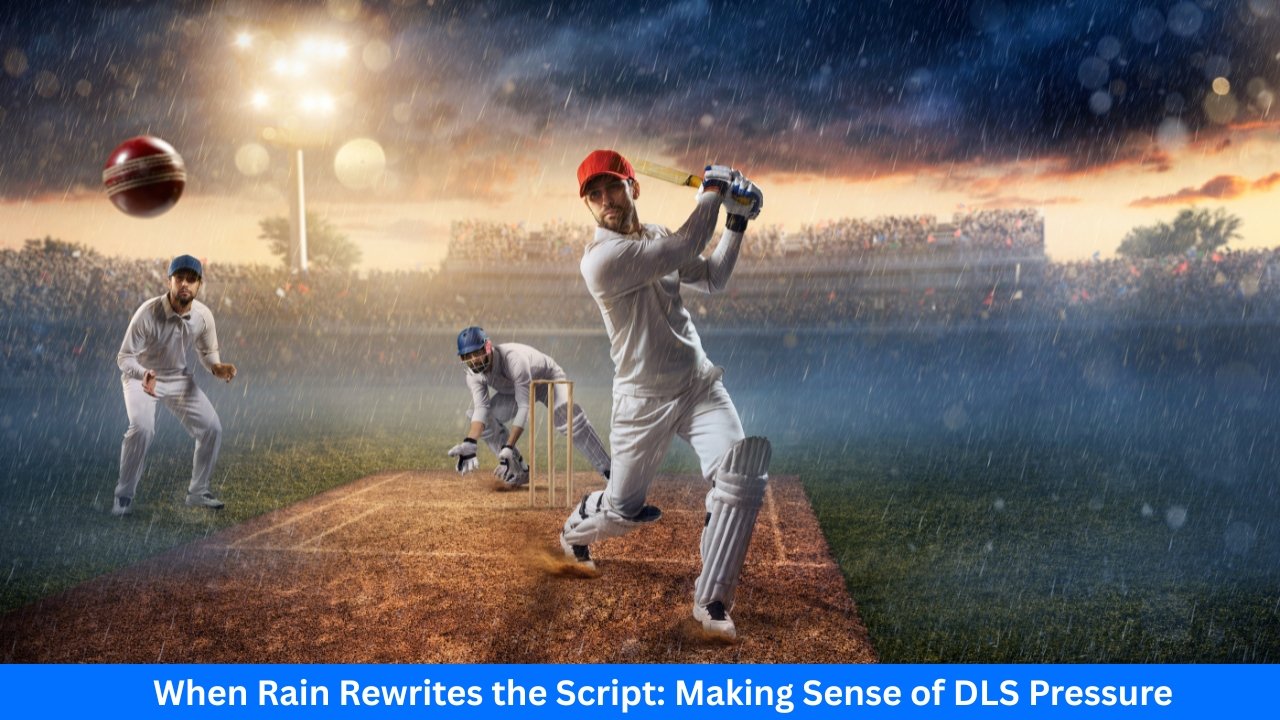Rain does not just pause cricket. It edits the match. Overs shrink. Targets shift. Roles change in minutes. Teams that treat weather as a variable – not as an interruption – keep control when everyone else scrambles. This guide explains how to think through a rain-affected game so decisions stay calm, field craft stays tidy, and batting plans fit the revised chase instead of fighting it.
The key is clarity during the restart window. Staff and fans need the same numbers, the same par at over ends, and the same sense of who must push and who must protect. A live, stable view prevents guesswork and stops heated debates about what “should” happen next. For clean ball-by-ball context that stamps time and shows how par moves as overs disappear, click here and keep that panel open alongside the broadcast – it becomes the shared map when the clouds finally break.
Why interruptions change more than totals
A rain delay removes time – and time is strategy. In limited-overs cricket, the batting side’s value is locked in wickets and balls. Cut balls, and the value of each wicket rises. Fielding sides also trade one kind of pressure for another. Protecting boundaries still matters, yet saving twos on heavy ground can flip par faster than a highlight catch. Bowlers who were building a plan through the middle must now deliver clarity at once. Captains who were banking overs from a specialist suddenly need those overs to start right now.
DLS compresses risk into short windows. Two tight overs after a restart can bury a chase because there is no room left to absorb dots. Conversely, a clean five-ball burst from a set batter can end a match early because the revised par is close and the long rope still sits where it sat before the rain. The restart is not just a continuation. It is a new phase with its own physics.
Build a DLS-ready plan before the first drop
Prepared teams do not invent ideas under umbrellas. They rehearse them. A basic DLS plan keeps options visible and arguments short:
- Define roles that survive truncation – who takes strike first after a restart, who farms singles, who hunts one boundary option.
- Map two bowling switches for wet balls – one that uses cross-seam on a holding deck, one that uses hard length when skid appears.
- Mark rope management by batter, not by habit – deep mid-wicket for the power hitter, deeper third for the slice merchant.
- Brief running rules – protect knees on heavy turf, trust singles to the safe side, avoid second runs to the long boundary.
- Set a language for par – one voice calls “par minus” or “par plus” at the over ends so everyone hears the same state.
This list fits on a dugout whiteboard. It saves at least one wicket and one over every wet night.
Bowling the restart – control the floor, then the ceiling
After rain, bowlers win by removing freebies. Slippery balls make wides expensive. The first task is a legal, hittable length that still guards angles. A cross-seam on a damp seam can behave like a cutter without the risk of sticking. Hard length into the hip with a packed leg-side ring turns ground strokes into singles and denies the two that haunt DLS math. A well-sold slower ball belongs only after a couple of honest quick ones – wet hands punish fancy early.
Field craft must match the plan. Two catchers in front of the square to a new batter say the edge is the target. Deep third stays honest if the slice is live. Mid-on and mid-off stagger deeper for set right-handers to kill the easy straight release. Captains who move rope depth by batter – not by overs remaining – protect par without gifting the cut. The goal is to control the floor of scoring first. Once the floor is low, the ceiling can take care of itself.
Batting the restart – earn par, then attack the gap
Revised targets tempt chaos. Smart batting treats the first six deliveries like a reset. One early boundary settles nerves. Two clean singles confirm running lines on heavy turf. A set player should own strike at the start of overs and choose one repeatable option – straight loft when the skid appears or sweep when the grip returns. New arrivals need one along-the-ground scoring shot and a safe rotation ball before trying invention.
Screens that help, not hype – why microcopy shapes choices
Rain creates noise. The right screen brings back the signal. Fixed anchors – score, wickets, balls, and required rate – stop eyes from hunting. Honest timestamps calm disputes about staleness. Short reason tags – “overs reduced,” “par moved,” “dew rising” – explain changes without lectures. En dashes add breath so captions read like a steady voice, not a siren. Motion should mark change and then rest – a one-second fade on new numbers is enough.
Language access matters in a cricket crowd. Regional lines that state conditions plainly help everyone track par together. The point is fewer hot takes and more aligned decisions. On wet nights, aligned decisions are runs on the board.
When clouds clear – keeping the head ahead of the par
Rain does not have to wreck a game. Teams and fans who treat the restart like a new chapter read it faster. Roles are clear. Plans travel. Bowls start on a length that survives moisture. Bats pick a safe option first and watch par rather than highlights. Staff share one live panel, one vocabulary, and one sense of when to press or protect. Under that rhythm, a DLS finish feels fair and legible – pressure comes from the contest, not from confusion about what the target means. That is how a season survives the weather and how a single wet night becomes a lesson that pays off the next time clouds gather over the lights.


